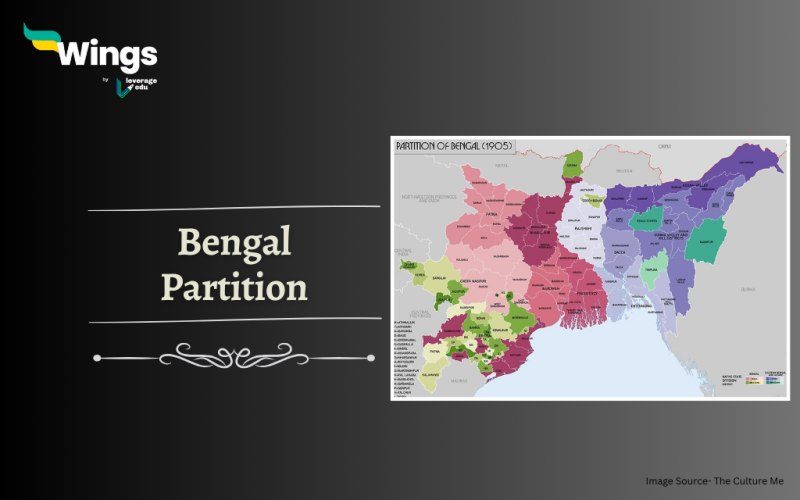The Bengal Partition took place in 1905 when the British government divided the province of Bengal into two parts. As per Lord Curzon, the then Viceroy of India, after the partition, the two new provinces divided were – Bengal (includes modern West Bengal, Odisha, and Bihar) and Eastern Bengal and Assam. The decision was made for administrative convenience, but it was widely seen as a “ Divide and Rule” policy to divide the Hindu and Muslim communities in Bengal. The partition was met with widespread protests too.
Table of Contents [show]
The Hindus, who were the majority in West Bengal, feared that they would be dominated by the Muslims in East Bengal. The Muslims, on the other hand, felt that they were being denied their rightful share of power.
The protests eventually led to the revocation of the partition in 1911. However, the damage had already been done. The Bengal partition had created a sense of division and mistrust between the Hindu and Muslim communities in Bengal.
Also Read – Partition of Bengal was Cancelled in Which Year?
What was the Impact of the Bengal Partition?
The Partition of Bengal had a devastating impact on the people of Bengal. Millions of people were displaced from their homes, and many were killed in the violence that followed.
- Swadeshi Movement was launched.
- The partition led to a decline in the economy of Bengal, as businesses and industries were disrupted.
- Impact on the cultural and social fabric of Bengal.
- Rabindranath Tagore announced National Mourning Day on October 16, the day of partition. He also announced rakhi, a sacred thread to symbolize the unity and bond between Bengali Hindus and Muslims.
- The “Mourning Day” was observed with “ Vande Mataram and Amar Shonar Bangla ” as the protest Anthem.
- The two halves of Bengal were now separated by a political border, and this made it difficult for people to maintain their ties with each other.
- The Bengal partition also led to a loss of cultural heritage, as many historical and religious sites were destroyed or damaged.
Also Read- Why did the Indian Mutiny Happen?
What was the Major Legacy of the Partition?
The Partition of Bengal became a painful chapter in the history of India. It is a story of division of lands and hearts, loss, and violence. However, it is also a story of resilience and hope. The people of Bengal have overcome the challenges of the partition and have rebuilt their lives. They have also preserved their cultural heritage and traditions.
Because of the protest and annulment, the capital of British India was moved from Calcutta to Delhi in 1911, which still remains the capital of independent India. The Partition of Bengal was a tragic event that had a profound impact on the people of Bengal. It is a story that should never be forgotten, as it is a reminder of the dangers of communal division.
This was all about the Bengal Partition. If you want to read more articles like this, you can get Study notes on the Modern History of India here. Also, you can visit our general knowledge page on Indian History!
 One app for all your study abroad needs
One app for all your study abroad needs















 45,000+ students trusted us with their dreams. Take the first step today!
45,000+ students trusted us with their dreams. Take the first step today!
